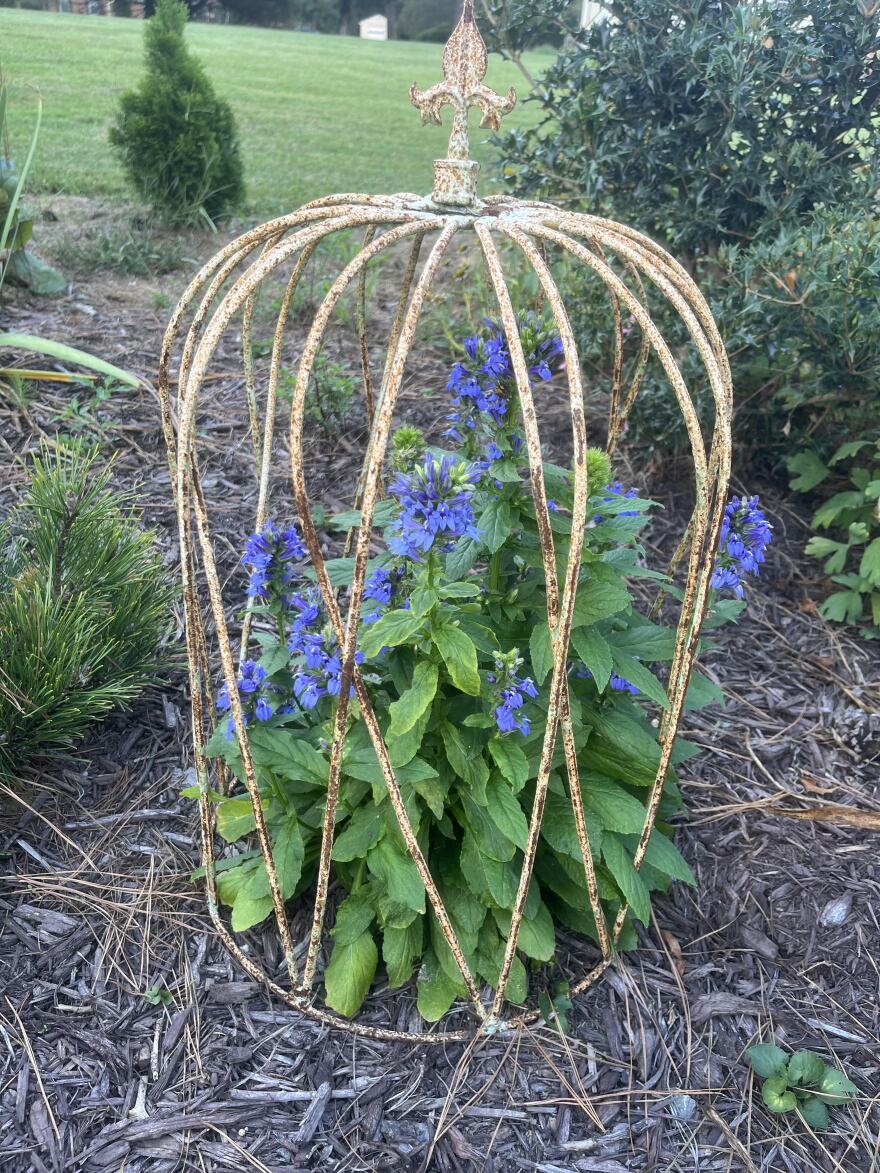Cooler temperatures and an increase in moisture make fall the perfect time to plant trees and shrubs. In USDA Plant Hardiness Zone 7, early October is still not too late to plant perennials, while trees and shrubs can be planted until mid-December.
Like many gardeners, I am weaving more native Virginia plants into my landscape. I am following the results of research led by Doug Tallamy, a professor at the University of Delaware’s Department of Entomology and Wildlife Ecology. The research team at UD proved pollinators, caterpillars and birds are sustained in a landscape that has a native plant mass of 70%. This means only 30% should be non-native plants at the most. To be clear, this is not an inventory ratio but a ratio of mass, which includes the lawn and the trees.
Planting a white, red or willow oak will quickly provide support to 534 different types of butterflies and moths, making oaks one of the keystone species that support wildlife in our ecoregion.
As a guide on what you should consider for your border or landscape, I am sharing a list of some of my favorite plants. As a landscape designer, I think in terms of color and season of bloom, so my list is organized by those plant attributes.
I list the botanical name and the common name for each plant. I garden primarily in full sun to partial shade, but I noted a few shade plants I have grown in the past. I have deer regularly browse through my garden, so I am not averse to protecting plants with barriers.
Listed plants deer eat in my gardens will have the initials DE after the common name. The letters NN after the common name indicates that the plant is not native to Virginia; it’s a non-native. You will find the majority of the list features native Virginia perennials which support pollinators.
Blue:
- Baptisia australis, Wild Indigo
- Amsonia tabernaemontana, Blue Star Flower
- Amsonia hubrichtii, Arkansas Blue Star Flower - NN
- Camassia quamash, Common Camassia - NN
- the shrub Vitex agnus castas, Chastertree - NN
- Salvia guaranitica “Black & Blue,” Sage Black and Blue - NN
- Ageratum houstonianum, Blue Mist Flower - DE
- Lobelia siphilitica, Blue Lobelia - DE
- Schizachyrium scoparium “Standing Ovation,” Standing Ovation Little Bluestem

Purple:
- Syringa vulgaris, Common Lilac shrub - NN, DE
- Agastache foeniculum, Anise Hyssop
- Vernonia noveboracensis, New York Ironweed
- Vernonia gigantea, Giant Ironweed
- Vernonia glauca, Broadleaf Ironweed
- Vernonia lettermannii, ‘Iron Butterfly’ Letterman’s Ironweed - NN
- All asters including Symphyotrichum novae-angliae, New England Aster - DE.
Pink:
- Phlox subulata, Creeping Phlox
- Cercis canadensis, Redbud tree
- Geranium maculatum, Wild Geranium
- Dianthus plumarius, Common Pink - NN
- Abelia x grandiflora “Edward Goucher”, Edward Goucher Abelia shrub - NN
- Lantana camara “Ham and Eggs,” Ham and Eggs Lantana - NN
- Anemone x hybrida “September Charm,” September Charm Japanese Anemone - NN, DE.
White:
- Amelanchier laevis, Allegheny Serviceberry tree
- Fothergilla gardenii, Dwarf Fothergilla shrub
- Styrax species, Silverbells tree - NN, DE
- Magnolia grandiflora “Little Gem,” Little Gem Southern Magnolia tree
- Pycnanthemum muticum, Short Toothed Mountain Mint
- Salvia officinalis “Berggarten,” Berggarten Sage - NN,
- Eupatorium perfoliatum, Boneset.

Yellow:
- Narcissus sp., Daffodils - NN
- Baptisia sphaerocarpa “Screaming Yellow,” Yellow False Indigo, Screaming Yellow
- Paeonia x “Bartzella,” Bartzella Itoh Peony - NN
- Gelsemium sempervirens evergreen vine
- Carolina Jessamine
- Cladrastis kentukea, Yellowwood tree
- All Rudbeckia species, Black Eyed Susans - DE
- Lantana camara “Miss Huff,” Miss Huff Lantana - NN
- Helianthus species, Sunflowers
- Solidago species, Goldenrods
- Helenium autumnale, Common Sneezeweed - DE.

Red:
- Aquilegia canadensis, Columbine
- Lobelia cardinalis, Cardinal Flower
- Lonicera sempervirens “Major Wheeler,” Major Wheeler Honeysuckle vine
- Hibiscus coccineus, Scarlet Rose Mallow
- Speglia marilandica, Indian Pink
- Monarda didyma, Beebalm
- Salvia elegans, Pineapple Sage - NN, DE.
Green:
- Prunus laurocerasus, Cherry Laurel shrub - NN
- Osmanthus x fortunei, Fortune’s Osmanthus - NN
- Morella cerifera, Bayberry
- Panicum species, Switchgrass
- Sorghastrum nutans, Indian Grass
- Carex pensylvanica, Pennsylvania sedge
- Dennstaedtia punctilobula, Hay Scented Fern
- Polystichum acrostichoides, Christmas Fern
- Dryopteris erythrosora, Autumn Shield Fern - NN
Multi-colored Iris - Did you know deer do not eat iris?
- Reblooming Iris germanica cultivars, German Bearded Iris - NN, these plants bloom in the spring and again in the fall! Look for the word Rebloomer on the plant tag
- Iris fulva, Iris hexagona, Iris brevicaulis, Iris giganticaerulea and Iris nelsonii, aka Louisiana Iris - NN
- Iris kaempferi, Japanese Water Iris - NN
Buying new plants is always fun. I encourage you to reference this list during the next visit to your local garden center.
Happy Gardening!
-Peggy Singlemann







